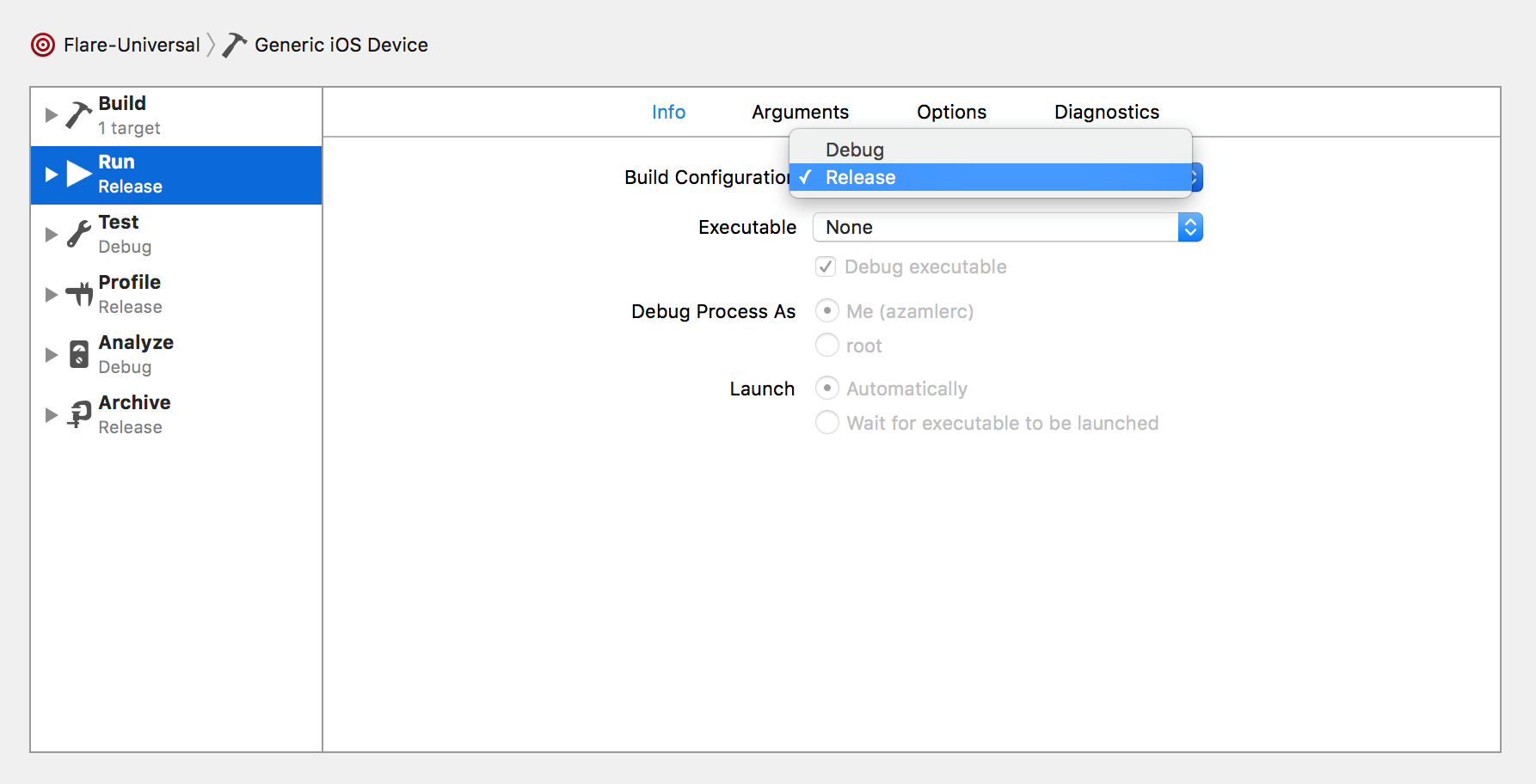Download
The Swift sample code for iOS and OS X is available on GitHub.
The Flare.xcworkspace contains several projects:
- SocketIO: a framework for connecting to Socket.IO servers
- Flare: a framework for connecting to the Flare server
- Explorer: a Mac app for browsing and editing Flare objects
- Trialteral: an iOS app that displays a map of the environment
- ReflektorRemote: a small app that synchronizes data with a thing
- Importer: a simple app for importing data into the server
Requirements
The Swift sample code is designed to work with Xcode 7.1, Swift 2.1, iOS 9.1 and OS X 10.11 or later.
Setup
To get started, open the Flare.xcworkspace to view all the projects in one window.
The SocketIO framework is written in Swift and works on OS X, iOS and watchOS.
The Flare framework is written in Swift, and works on OS X, iOS and watchOS. Beacon localization services depend on Bluetooth hardware and work only on iOS. The Swift framework depends on the SocketIO framework.
Mac
The Explorer app runs on OS X and provides an overview of all environments, zones, things and devices in the database. It depends on both the SocketIO and the Flare frameworks.
To build for Mac, first build the SocketIO framework, then build the Flare framework, then build the Explorer app.
Note: When building the frameworks, make sure to choose Edit Scheme and change the build configuration from Debug to Release.


The built frameworks will be placed in the Output/Release/ folder inside the folder for each project, where other projects link to them. If you see a Output/Debug/ folder, see the note above!
By default, the app connects to the server on localhost at port 1234. You can specify another server or port in the Preferences.
iOS
To build for iOS, first build the SocketIO framework, then the Flare framework, then the Trilateral app.
Note: When building the frameworks, make sure to choose Edit Scheme and change the build configuration from Debug to Release.
The built frameworks will be placed in the Output/Release-iphoneos/ folder inside the folder for each project, where other projects link to them.
Once you've built and installed the app, make sure to enter the host and port (by default, 1234) of your Flare server in the Settings.
Framework documentation
The Flare framework contains several classes:
FlareManager is a high level class with methods for calling both the Flare REST API (for describing objects in the environment) and the Flare Socket.IO API (for realtime communication between objects). See the Flare API page for complete documentation.
FlareModel.swift contains definitions of the Environment, Zone, Thing and Device classes, which all inherit common variables and methods from the abstract Flare superclass. These objects can be initialized with JSON objects returned by the FlareManager.
public typealias JSONDictionary = [String:AnyObject]
public typealias JSONArray = [JSONDictionary]
public func sendRequest(uri: String,
params: JSONDictionary?,
method: HTTPMethod,
message: JSONDictionary?,
handler:(AnyObject) -> ())
public func sendRequest(uri: String,
params: JSONDictionary?,
handler:(AnyObject) -> ())
public func sendRequest(uri: String,
handler:(AnyObject) -> ())
APIManager is a class for calling a generic REST API. It defines a JSONDictionary typealias to refer to a dictionary with String keys, and a JSONArray object as an array of JSONDIctionary objects. The APIManager's main method is sendRequest(), which has several variants with different number of arguments. It makes HTTP requests asynchronously, and calls the handler closure when the response is available. The handler closure takes a JSONDictionary containing the response, or a JSONArray for methods that returns a list of objects.
flareManager.getEnvironment("123") {json in
let environment = Environment(json)
}
flareManager.listZones("123") {jsonArray in
for json in jsonArray {
let zone = Zone(json)
}
}
For example, to send a request like GET /environments/123, here's an example in Swift that creates an Environment object. Note that when calling a method in Swift where the last argument is a closure, you can specify the closure outside the parentheses, and the argument types can be inferred.
BeaconManager is a class allows an iOS device to calculate its position in the environment based on the distance to three or more iBeacons.
Extensions.swift contains a number of useful extensions, which allow you to do things like subtract one CGPoint from another to find the diagonal distance. Swift is a highly extensible language, and many operators are overridden on particular pairs of types.
Using FlareManager
You can use the FlareManager to calling both the Flare REST API (for describing objects in the environment) and the Flare Socket.IO API (for realtime communication between objects).
Init
var flareManager = FlareManager(host, port)
Provide the host and port when initializing the FlareManager.
Set delegate
flareManager.delegate = self
Set the delegate to receive SocketIO message callbacks.
Connect
flareManager.connect()
Connect to the server before calling the SocketIO interface.
REST interface
flareManager.getEnvironments() {jsonArray in
for json in jsonArray {
let environment = Environment(json)
}
}
flareManager.getEnvironment("123") {json in
let environment = Environment(json)
}
flareManager.listZones("123") {jsonArray in
for json in jsonArray {
let zone = Zone(json)
}
}
To call a REST method.
Socket.IO interface
flareManager.getData(environment)
To call a SocketIO method.
func didReceiveData(flare: Flare, data: JSONDictionary) {
NSLog("\(flare.name) data: \(data)")
}
Implement a delegate method to receive SocketIO message callbacks.
For more examples, see the Socket.IO tutorial.
Using BeaconManager
You can use the BeaconManager to determine the location of the user's device based on the distances from the beacons in the environment.
Init
var beaconManager = BeaconManager()
Create a BeaconManager:
Delegate
beaconManager.delegate = self
Set the delegate to receive callbacks:
Environment
beaconManager.loadEnvironment(environment)
Load the environment into the BeaconManager:
Start scanning
self.beaconManager.start()
Start scanning for beacons:
Notifications
func devicePositionDidChange(position: CGPoint) {
device!.position = position
flareManager.setPosition(device!, position: position)
}
Implement a delegate method to be notified when the device's position changes:
For a complete example, see the Beacons tutorial.